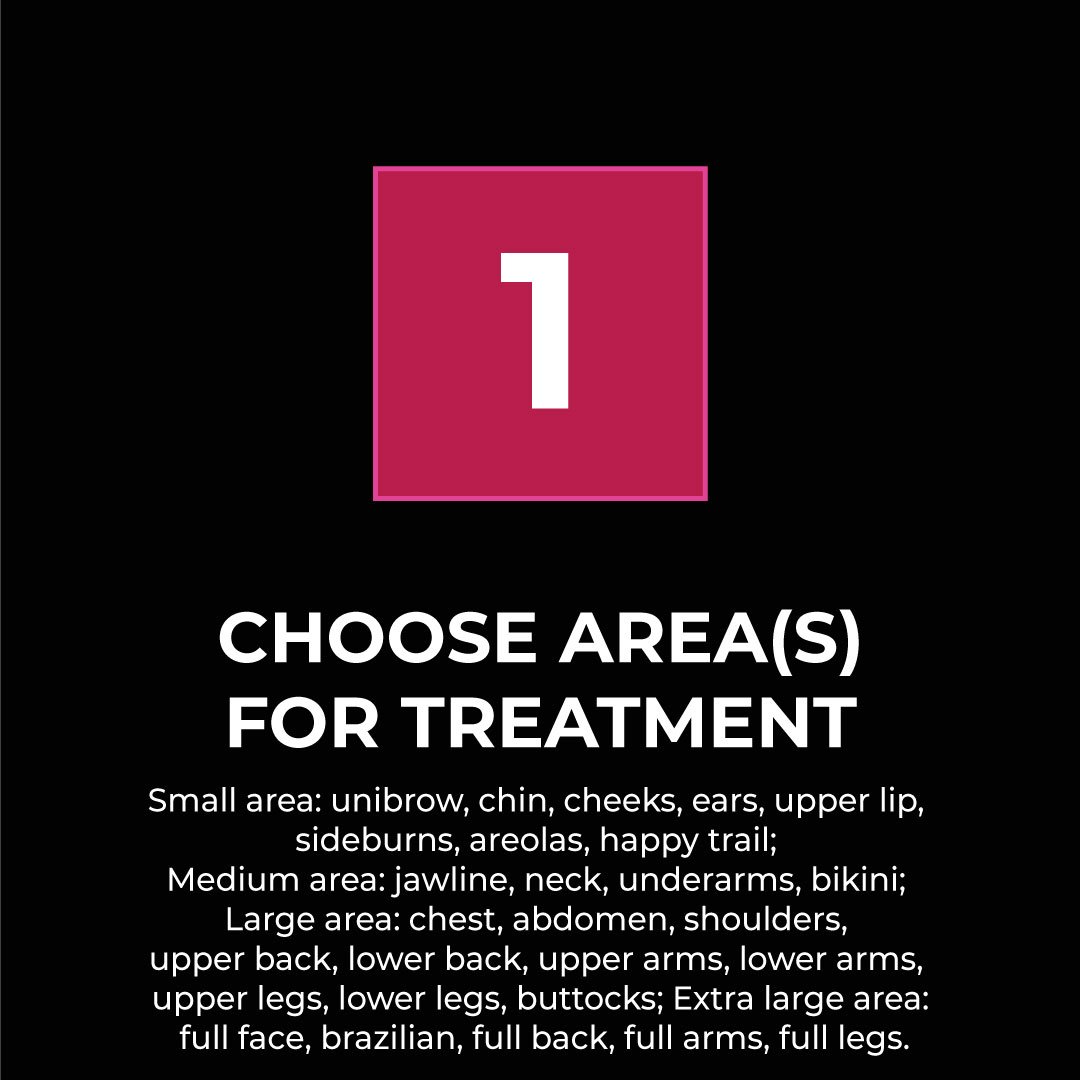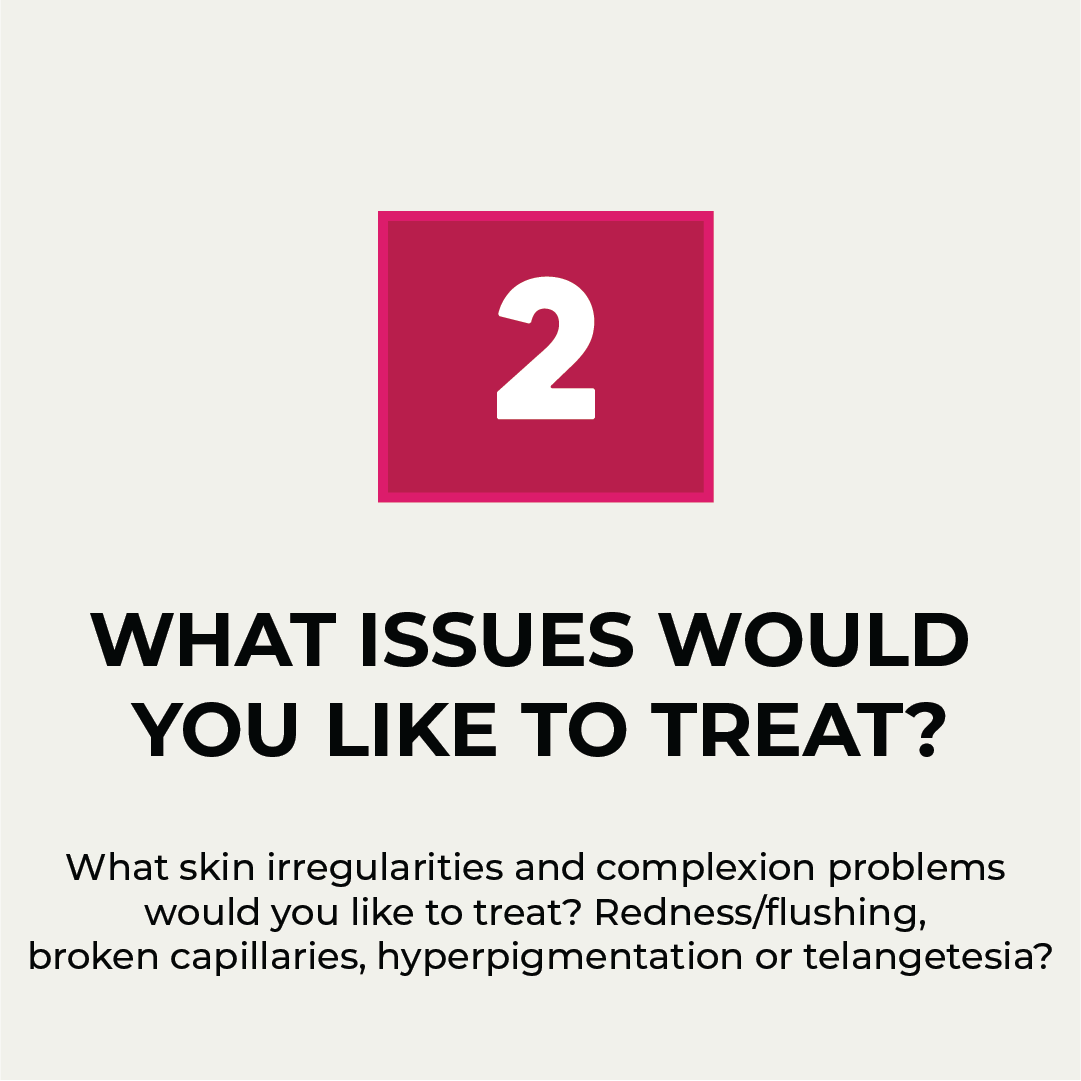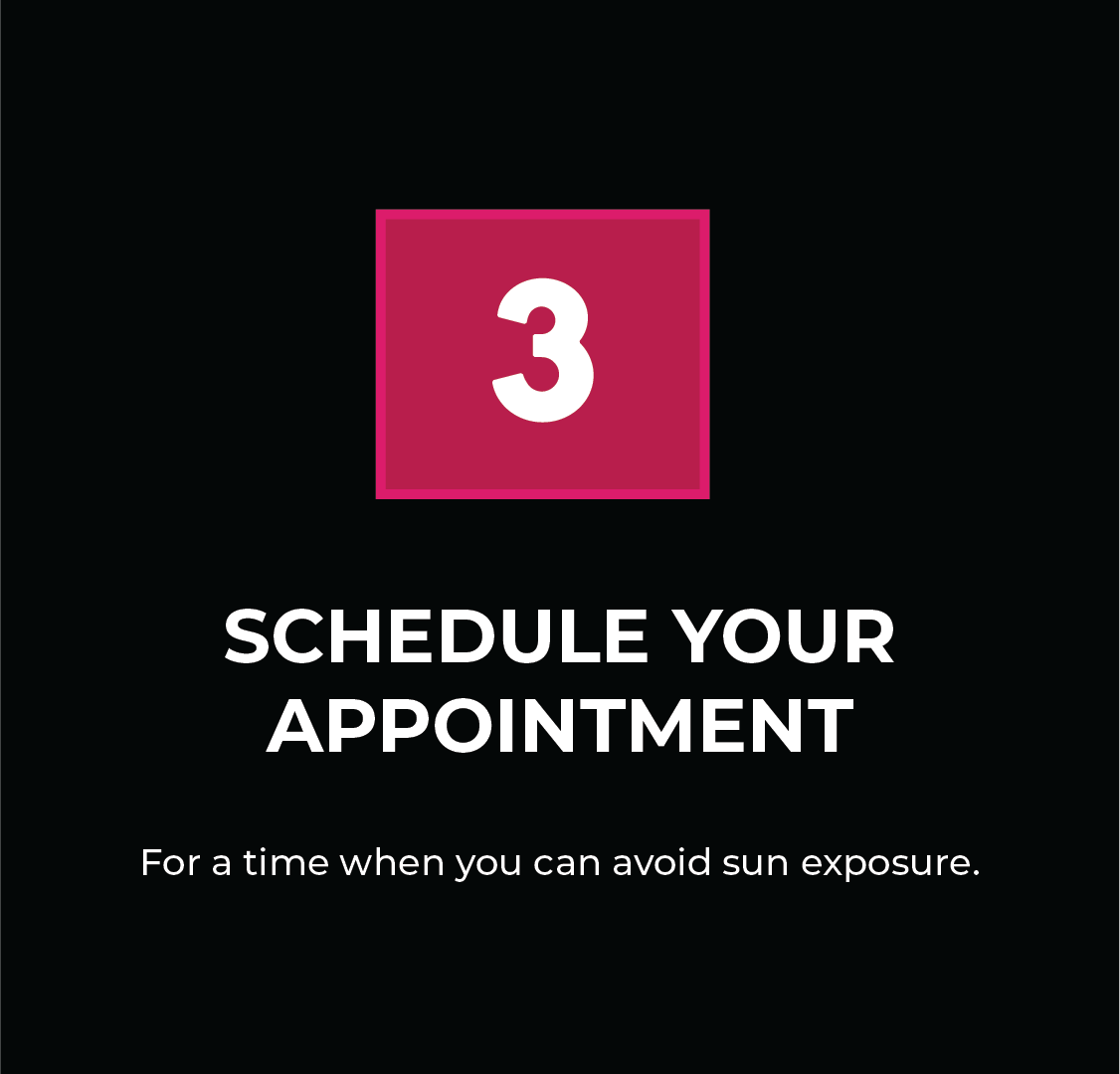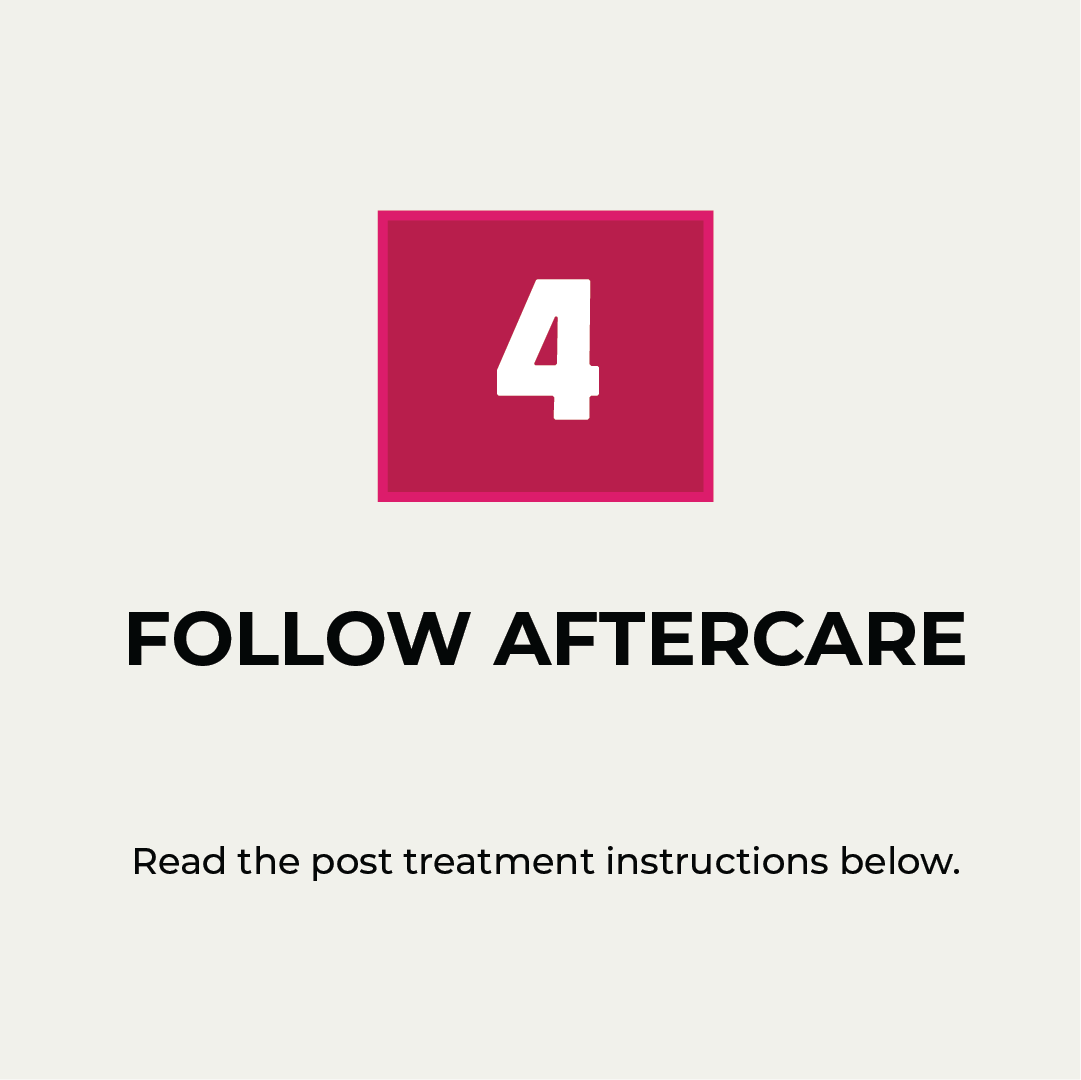IPL for Face + Body 101
IPL Skin Rejuvenation helps restore the skins youthful glow. Intense pulses of light are used to penetrate deep into the skin causing collagen and blood vessels below the epidermis to constrict, effectively improving skin texture, eliminating discolorations, reducing pore size, minimizing wrinkles and fine lines. Those who have rosacea or acne may also benefit from IPL treatments. Photorejuvenation with IPL is the most versatile and called the gold standard of all treatment options. IPL can treat numerous skin conditions at once. This FDA-cleared, patented technology provides dramatic results for a variety of benign conditions and skin irregularities, complexion problems including , flushing and broken capillaries, age spots, sun-induced freckles, symptoms of rosacea, birthmarks, unsightly veins, acne scarring and other blemishes even unwanted hair. Our focus is to treat patients who simply want to revitalize their appearance without recovery downtime.
How It Works
Benefits of IPL Photofacial
Intense Pulse Light (IPL) Skin Treatments using Photorejuvenation offers a solution that:
Addresses skin conditions that are most visible
Treats the entire face, not only small spots
Causes little discomfort
Offers an immediate return to routine activities
Provides gradual, natural-looking improvement
Produces long-lasting results
Treatment Areas
IPL Photofacial can be used to treat your face, neck, chest, arms, legs, hands, (essentially your whole body), where sun damage is often most visible.
IPL Hair Removal can be used anywhere you grow unwanted body hair.
Prep + Post Treatment
-
How to prepare for your IPL Treatment.
• Avoid tanning and extreme sun exposure for 4 weeks before your appointment.
• Avoid self tanner for 2 weeks before your appointment.
• Avoid medications that may cause sun sensitivity or excessive bleeding; Photosensitive medication should be discontinued for 2 weeks prior to your treatment. Before discontinuing use, patients should seek advice from their primary care physician.
• Avoid waxing, chemical peel, or collagen shots for 2 weeks before your appointment.
• Abstain from all anti-aging topicals for 72 hours prior to treatment and prescription strength Retin-A for a full week.
• Avoid drinking more than 2 alcoholic beverages 24 hours before your treatment.
• Remove all makeup on the treatment area.
• Fully shave the treatment area shortly before your appointment for hair removal (the closer the shave the better, this allows for the laser to be direct to the hair follicles without individual hairs interfering).
• Avoid any scented products (such as perfume, deodorant, lotion, or makeup) on the treatment area on the day of your appointment - the areas being treated need to be clean and free of chemical products.
-
Immediately after your treatment there likely will be some slight redness and mild discomfort similar to a sunburn. You may also notice during and immediately after your session the smell of burned hairs/skin. This is normal and will subside with cleansing.
Please:
• Avoid sun exposure on treatment area for four weeks.
• Avoid natural and artificial tanning—including self-tanner and spray tans—for a minimum of four weeks.
• Avoid activities that induce excessive sweating—hot tubs, saunas, hot showers, whirlpools, and vigorous workouts—for one to two days to minimize irritation and prolonged redness.
• Apply a cold compress—not ice—to help reduce redness and swelling. You may use aloe gel or cool packs may be applied. Chemical cold packs are not recommended if their temperature is below 39°F.
• Do not rub, pick or scratch any darkened, pigmented areas that begin to flake.
• Do not use any loofahs or abrasive scrubs for at least 1 week or until any redness and sensitivity subsides.
• Avoid using functional chemicals (ex: retinol, AHA) for at least for 48 hours after treatment.
• Avoid using skin lotion containing alcohol since it may irritate the skin after treatment. Instead, use a mild skin lotion for moisture replenishment.
• Pigmentation may occur again if you do not use sunblock after treatment. Apply a minimum SPF 45 (UVA/UVB) sunblock every two hours during sun exposure up to eight weeks.
• Apply antibiotic ointment if skin is broken or blistering. If a crusting or blistering develops apply Vaseline or ointment twice daily, to keep the area moist until healed and contact our office if the area shows signs of worsening condition.
• Use gentle cleansers with lukewarm water. Do not rub skin vigorously. Moisturizer may be applied.
• If you take medicine due to other diseases, inform the operator.
• After treatment of skin rejuvenation and pigmented lesions, eschar is formed. This is a normal reaction.
• Eschar may naturally fall off in 1-2 weeks. Additional treatments can be performed after that.
• Perform treatment of inflammatory acne after squeezing suppuration.
• Treatment of inflammatory acne should be performed 2 weeks apart.
• Perform most treatments except hair removal in the interval of 2-4 weeks.
• Though it is important to wait until after eschar falls off to continue treatment. Shower mode and toning mode treatment can be performed 1 week apart.
IPL Photofacial FAQs
-
“IPL” stands for “Intense Pulse Light”. Also known as a flash lamp device. It is not a laser. An IPL treatment can cater to many different skin concerns-we use IPL to treat redness and vascular lesions, discoloration and sun spots, acne, and aging. An intense dose of high-powered light travels into the skin and treats the problematic skin condition by attacking the chromophore (or pigmented target). IPL is polychromatic light energy so the extra benefit is in instances such as acne or aging, that same intense pulse light kills the acne causing bacteria also stimulates a burst of collagen induction in the skin, producing an anti-aging effect. We use different filters and wavelengths to address a variety of skin concerns.
-
IPL feels less painful and more “shocking” due to the intensity and speed. There is a quick pulse of intense heat that lasts a fraction of a second, milliseconds technically, accompanied by a moderate warmth that feels similar to a sunburn. Depending on the chromophore selected, you may experience mild to severe erythema that will last between 1-3 days. A mild sunburn-like sensation is expected, you can apply ice packs (not direct ice) to the treated areas help feel more comfortable over the next couple days.
-
No, unfortunately. IPL is only safe for Fitzpatrick skin types 1-4. If you have too much melanin in the skin the IPL will focus on the skin as well and you can risk burns and blisters.
-
It depends on the chromophore and numerous factors including location and size. In the instance of brown spots/dyschromia, we recommend a series of at least 3 sessions spaced out between 4-8 weeks. The lesions will crust and darken giving coffee ground appearance. Your body will naturally exfoliate theses spots and they will get lighter each subsequent visit until they are gone. Some stubborn spots may require more attention. Lifestyle and home care are also crucially important factors in the efficacy of your treatment(s). Dyschromia can come back with UV exposure and another session or series may be needed in the future.
Clients being treated for redness and rosacea can expect a gradual reduction in the redness of their skin that may last anywhere from months to years. Redness and rosacea are the visual manifestations of a weak vascular system, which creates distended and bulging veins, or “telangectasia”. We are able to cut off blood flow to telangectasic skin, but because of the weak vascular system, the redness may return in a different area later in time. Patients seeking treatment for vascular lesions will likely require 4-6 sessions and will be treated intermittently throughout their lives-the goal is to manage the redness, because it can never be truly cured. Touch ups and annual maintenance is recommended.
Acneic clients should plan on visiting us a minimum of 4-6 sessions spaced out between 2 and 4 week intervals to obtain the benefits of p.acnes-killing IPL treatment. We recommend alternating with microneedling to help smooth out acne scars.
Clients seeking anti aging effects from IPL will notice tightening and lifting within a few days after treatment and should schedule IPL treatments intermittently to continue reaping the collagen producing benefits. The full benefits of collagen production is a slow process and can take up to 6 months post session.
-
For severe sun damage, we recommend 6-8 treatments every 4-6 weeks.
For moderate sun damage, we recommend 4-6 treatments every 4-6 weeks.
For mild sun damage, we recommend 2-3 treatments every 4-6 weeks.
-
It is imperative to wear an SPF of 45 or greater and avoid unprotected artificial or natural sun for 6 weeks post session. This prevents hyperpigmentation or adverse affects of IPL.
A mild sunburn-like sensation is expected. This usually lasts 1-2 hours but can persist up to 24 hours, individuals may vary. Mild swelling, tenderness and/or redness may accompany this. A topical anti-inflammatory can be used for redness and tenderness. An oral, non-steroidal anti-inflammatory, such as acetaminophen or ibuprofen may be taken to reduce discomfort, use according to the manufacturer’s instructions.
Shower as usual. Treated areas may be temperature-sensitive. Avoid soaking in a hot tub of water. Avoid scrubbing, use of exfoliants, scrub brushes and loofah sponges until the treatment area has returned to its pre-treatment condition.
Veins or vascular lesions may undergo immediate graying or blanching (turning white) or they may exhibit a slight purple or red coloring. If the treated area develops crusting or a scab, it will start to flake off in 7-14 days. The vessels will fully or partially fade in about the same amount of time. Repeat treatment to veins may be every 7-14 days, or when the skin has fully recovered.
Until the redness has completely resolved, avoid all of the following:
Applying cosmetics to the treated area
Swimming, especially in pools with chemicals, such as chlorine
Ocean swimming and hot tubs/jacuzzis
Excessive perspiration or irritation to the treated area
Sun exposure to the treated areas – to prevent skin color change
-
It’s critical to stay out of the sun while pursuing IPL treatments, as IPL is not safe for those who have had recent sun exposure with any tan in the past 30 days. We recommend a daily 45 SPF to prepare for treatment, protect your skin while receiving treatments, and to preserve results. If you enjoy sunbathing, winter is the best time to pursue IPL treatments.
Abstain from all anti-aging topicals for 72 hours prior to treatment and prescription strength Retin-A for a full week.
-
Before treatment, a cold gel is usually applied to the areas to be treated and patients wear protective eyewear. During treatment, a trained team member gently applies the smooth, crystalline surface of the IPL handpiece to the skin. Light is delivered to the skin surface in precise pulses that are typically pain-free. Occasionally some signs of treatment, such as redness, can last for one or two hours. In most cases, the entire face is treated, but the therapy can also work well on the neck, chest, arms, legs, hands (whole body). Results from a full series of treatments usually last for a year or more.
-
A typical treatment can last anywhere from 20 to 60 minutes, depending on the size of the treatment area. Because there is little or no downtime, you can have an IPL Photofacial during your lunch break.
-
Yes, but avoid waxing, plucking and bleaching treated areas.
-
Unfortunately, we cannot work over tattooed areas.
-
Visible improvement in skin tone after 1-2 treatments.
Visible improvement in sun damage after 3-4 treatments.
No need to have complicated skin care regimen.
Treatments are fast so you can return to daily activities.
Affordable pricing. Peach Medical Group offers these advanced IPL and photofacial treatments at a low cost.
-
The treatment process starts with a short consultation to determine the severity of the sun damage. Based on this, our health care providers will be able to give you their professional opinion on how many session it will take to reach the target outcomes.
We will also review your medical history and discuss all post treatment instructions. If you decide to move forward with the treatment, we will apply a thin layer of topical anesthetic to the are that is to be treated.
After 15-20 minutes, we use the Lumenis handpiece to target the skin. You will see a bright light followed by pulse of heat. This is the laser’s concentrated lightbeam. This will be repeated until the entire area has been treated.
After the treatment, we will apply a moisturizer and a sunscreen and review the post treatment instructions. Patient are recommended to commit to a series of treatment in order to obtain optimal results.
-
Age spots are also known as liver spots and solar lentigines and typically appear as small dark areas on the skin. They can appear in different sized but are seen more on the face, hands, shoulders, arms, and legs.
Age and livers spots are more common in people over the age of 50 but can start to appear much younger especially if the patient has been exposed to excessive sun. True age and liver spots are harmless and only pose a cosmetic challenge to many patients.
Patients of all skin types are susceptible to age and liver spots but are more common in people with lighter skin. Age and liver spots look like the following:
They are flat and are darker than the skin around it.
Color can range from slightly tan to black.
Will appear on areas of the body that are exposed to the sun.
Age and liver spot size can range from the size of a freckle to half an inch.
-
Age and liver spots are not harmful. However, if you are concerned, we recommend to visit your physician for a closer look. It is important to keep track of any changes in size and pigmentation of the age and liver spots.
Your physician will also be able to recommend any treatment to lighten them or zap them away with lasers.
Age spots are usually harmless and don’t require medical care. Have your doctor look at spots that are dark or have changed in appearance. These changes can be signs of melanoma, a serious form of skin cancer.
-
Dark, age, and liver spots are caused by the overproduction of pigmentation cells in our skin caused by ultraviolet rays. Over the course of many years, areas that are more exposed to the
-
Anyone is at risk to develop these age spots. However, factors that increase the likelihood include light skin and regular exposure to sun.
-
Redness on the face. Rosacea will cause patients to have redness around the nose and cheeks. The persistent redness will eventually progress and small blood vessel will turn red and visible.
Patients with rosacea will notice that they will develop red bumps on the nose. These bumps will sometimes have pus and may be mistaken for acne. Furthermore, patients will notice the skin on the nose and cheek be tender and feel warm.
Patients with rosacea will also notice eye dryness, red eyelids, and also irritation in the eye area.
Severe cases of rosacea will cause the nose to become large. This is actually the skin becoming more thick.
-
Although the exact cause of rosacea is unknown, many researchers hypothesis that it is hereditary and environmental. It is important to remember that rosacea is not due to hygiene issues.
The following are a few factors that are known to make rosacea worsen or flare up:
Consumption of alcohol
Spicy or hot foods
Emotional stress
Physical activity
Cosmetics products
Certain drugs
What are rosacea risk factors?
Women have more prevalence in suffering from rosacea.
Patients with fair skin.
Over the age of 30
Habitual smoking
Family history with rosacea
-
Laser treatment help reduce redness and enlarged blood vessels but using high energy light beams to collapse the blood capillaries. Cosmetic laser therapies help patients with early stages of rosacea.
Lasers can work really well with tiny and visible blood vessels on the nose and cheeks. Cosmetic laser therapies involve repeat treatments in order to keep the symptoms at bay. Unfortunately, laser therapies are not a permanent solution for rosacea symptoms.
If you’re searching for even more information on laser skin treatments but aren’t sure where to start, a consultation might be just what you’re looking for!
-
After your first treatment, your skin will feel smoother and will have a more even tone. These improvements are gradual and will be more visible after each treatment. Five treatments are typically performed for optimal results. Some patients will benefit from an additional treatments.
-
In short, your skin absorbs different colours/wavelengths of light at different depths. For example, violet (400nm-420nm), barely penetrates the skin and is absorbed at 0.1 of a mm. On the other hand, the colour red (620nm-730nm), doesn’t get absorbed until somewhere between 3mm-5mm. Lasers are one specific colour of light, which limits each laser’s capability for what they can be used for, because they can only penetrate to one specific depth. This is great for surgeries on cancers, or other specific procedures requiring a single exact depth. But for hair removal & other cosmetic procedures involving the skin, where the depths of the target cells can vary between 0.6mm & 5mm lasers are not all the well-equipped.
IPL on the other hand, or white light, can be filtered to give you a range of light from 400nm-1200nm, with any combination of colours/wavelengths within this range. This makes it a more versatile technology that is easily adapted to treat pigmentation, acne, photo skin rejuvenations, hair removal, even varicose veins, & sun spots.
Both Laser & IPL work using the same mechanism of action, where light is converted into heat to achieve the desired result on the target cells, whether that be to stimulate (In the case of a Skin Rejuvenation treatment), or to denature the cells (Hair removal). Studies show that there is negligible difference in long term results between the 2 technologies, but that IPL has less risk of complications during the treatment process.
-
You are not a candidate for IPL Face + Body if any of the following apply to you:
Recent Sunburn
Unprotected Sun Exposure
Pregnancy
History of Seizures
Severe Dermatitis or Eczema (within the treatment area)
Active Infections
Accutane use in the last 6 months
Herpes 1 or 2 (within the treatment area)
Very Dark Skin (Fitzpatrick 6)
Photo sensitive medications are best avoided




